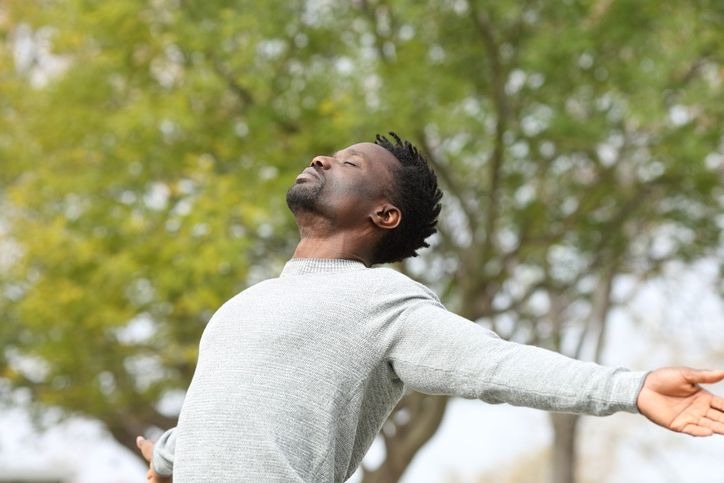Conscious natural breathing: how to observe your breath?
Caution : You must consult your doctor for your health. This page presents only a personal and alternative point of view which should not be considered as an attempt to prescribe medicine.
Conscious breathing is defined as being a practice that allows you to experience your breathing in a conscious way, rather than experiencing breathing on automatic pilot.
It is about being aware of the presence of his breath throughout the duration of the inspiration as well as that of the expiration.
Being able to observe your breath is an essential step for effective conscious breathing.

How to practice conscious breathing?
Conscious breathing can be practiced in many situations.
It can be exercised at the same time each day.
It will consist of small exercises of presence with very simple breath.
It can also be practiced through meditation techniques such as yoga.
This can be done in the morning, at bedtime, or at any other time of the day.
It can also be practiced during any routine activity including in personal or professional life.
It is possible to observe one's breath by practicing conscious breathing in a bathroom, in a gym, while walking, while chatting with friends or clients.
You can even do it when you're in a meeting, on public transport, and even, merging with your partner.
You can also practice it before a special event already scheduled, during its course, and even, after it has been held.
To do this, all you have to do is adapt to the different modalities of your breath, remembering to adopt the form of conscious breathing that is most appropriate.
How to better observe your breath?
The exercises related to the control of the breath through the control of the breath are also considered to be techniques of conscious breathing.
This control requires full attention and a breath presence.
This exercise takes place in four main phases:
- The inhalation at first allows you to feel the air brushing your nostrils. You must be aware of the passage of this air which enters your nose in order to follow its path.
- Once the air is inside, you should notice that the breathing stops for a short time, this is the second step.
- In the third step, you will observe the passage of air towards the exit of the nostrils, at this exact moment the breathing stops before the cycle resumes again.
It may happen that you are fully immersed in observing the realization of these four times.
From that moment, your mind no longer intervenes, it calms down.
In fact, when you watch your breath with great attention and concentration, your mind is inhibited.
Fundamentals of conscious breathing
Mindful breathing includes many techniques that are as practical as they are effective.
These allow you to develop a true presence of yourself and provide skills for personal and spiritual development.
The basic practice is actually very simple conscious breathing.
It is carried out in full awareness of your breath.
It can manifest itself in several forms that can be easily integrated into everyday life.
It runs at any time and in any place as a tool and provides energy and emotional resources.
Conscious breathing techniques are also practiced in several therapeutic disciplines to reduce stress and combat anxiety, such as sophrology, pranayama yoga, etc.
It brings real personal and spiritual transformation and unparalleled well-being.
It also preserves and improves the health of the body.
Aside from their multiple uses, conscious breathing techniques are also considered a tool for spiritual development.
They are used in the great spiritual traditions of the world more specifically Hinduism, Buddhism, Taoism, Judaism, Islam and the Christian religion.
They are present almost everywhere.
Conscious breathing: why is it so important?
Conscious breathing when practiced well brings many benefits.
Indeed, it helps strengthen the proper functioning of your body, as well as your immune system.
It gives you tone, energy and vitality.
By practicing mindful breathing, you reduce your stress and anxiety levels.
It also allows you to free all the links that block you and brings balance to your emotions.
It also allows you to express your creativity, as well as your intuitive abilities.
Mindful breathing also improves your concentration and develops your inner listening.
It contributes to your personal and spiritual development.
Clearly, this form of observation is still practiced and remains a simple technique, but very formidable.
❤ The ultimate guide to breathing
Intermittent Breathing : Discover the method to quickly relieve your anxiety and chronic fatigue (positive effects from the first use).Read also :
Previous article : Holotropic breathing (rebirth): benefits and dangers?
Next article : Difficult and painful deep breathing: the yoga practitioner problem ?

